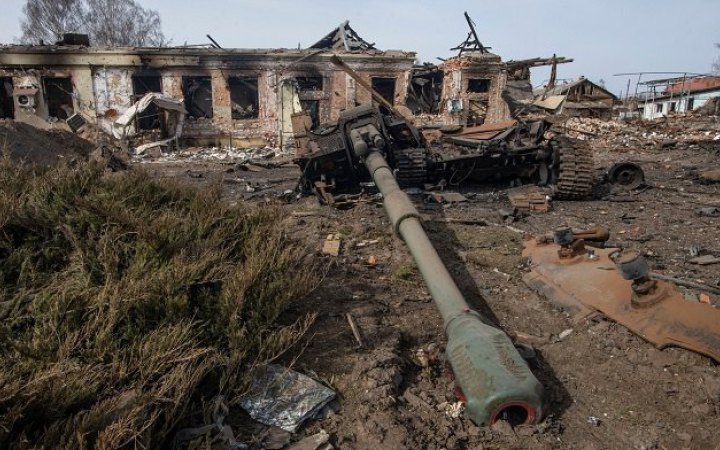ISW: Russia uses less armor on frontlines as Ukraine reports destruction of some 13,000 armored units over year
Russian forces are modifying their assault tactics, reducing armored vehicle deployment after sustaining significant losses throughout 2024.


Ukraine has reported destroying or damaging 3,689 tanks, 8,956 infantry fighting vehicles (IFVs), 13,050 artillery pieces, and 407 air defense systems in 2024. These losses are straining Russia’s capacity to sustain mechanized operations, according to the Institute for the Study of War (ISW).
Between January 2024 and January 2025, Russian forces reportedly suffered significant losses across multiple offensives, with at least 197 tanks and 661 armored personnel carriers (APCs) destroyed during intensified operations in Donetsk Oblast in September and October, the report says. ISW noted that Russian forces likely experienced even higher losses during earlier mechanized assaults in June and July.
Soviet-era stocks and production limits
Russia’s defense industrial base struggles to compensate for these losses, producing and repairing only 250–300 tanks annually – far below the rate of attrition. A December assessment indicated that Russia retains less than half of its pre-war tank and armored reserves, with remaining vehicles often degraded by age and weather, according to ISW
Shift to infantry and alternative transport
Recent Ukrainian reports suggest Russia is reducing its use of armored vehicles in frontline assaults, particularly in Kurakhove and Pokrovsk – the sectors of the main thrusts of Russia’s assaults in Donetsk Oblast.
A Ukrainian brigade spokesperson stated that Russian forces have shifted to infantry-based operations, using armored vehicles primarily for fire support. Ukrainian sources also noted increased use of electric scooters, motorcycles, and ATVs in assaults, likely as a response to vehicle shortages.
Outlook for Russian mechanized operations
ISW suggests that Russia’s current loss rate, nearly three times higher than in the war’s first two years, is unsustainable. While Soviet-era stocks and refurbished vehicles temporarily support operations, the Kremlin faces mounting challenges in maintaining mechanized capabilities, potentially forcing further reliance on alternative strategies.
“Russian forces may be using fewer armored vehicles in the Kurakhove and Pokrovsk directions if the Russian military is struggling to reequip frontline Russian units and formations and if Russian military command does not want to withdraw Russian units for rest and reconstitution and risk further slowing Russian advances in high-priority frontline sectors,” ISW wrote.
Related:
- Heaviest fighting on Saturday reported in Pokrovsk direction – General Staff of Ukraine
- Russia’s human loss/fighting area ratio exceeds all modern conflicts except Korean War
- Russian losses hit 421,000 in 2024 – highest of war, Ukraine’s top general says
- ISW: Russian army recruitment barely matches daily casualty rates
- Frontline report: Ukrainian defenders turn Russian blitz near Toretsk into carnage
- Forbes: Ukraine’s anti-tank missiles still outshoot drones in Kursk combat
- Pentagon: Russia lost 700,000 people since February 2022 and spent over $ 200 bn on war
- Ukrainian army lost 43,000 soldiers since Russia’s full-scale invasion began, Zelenskyy reveals
- Mosfilm studio transfers its T-55, PT-76 tanks from 1950s to Russian army amid equipment shortage



